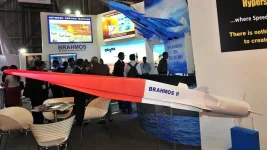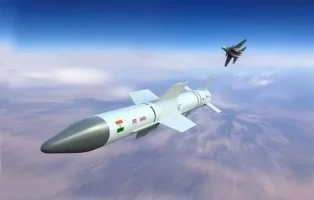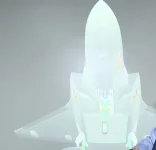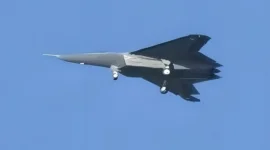- Views: 2K
- Replies: 8
Recent reports circulating within Pakistani media channels have suggested that the Rafale fighter jets acquired by India operate in isolation, lacking integration with the wider Indian Air Force (IAF) network. However, factual evidence contradicts these claims, demonstrating that the Rafales are fully integrated and play a vital role within India's sophisticated network-centric warfare framework.
The foundation of this integration is the Air Force Network (AFNet), a secure, fibre-optic digital grid established by the IAF in 2010. This robust network connects various air bases, command hubs, aircraft, and ground installations. The Rafale jets, which entered service in 2020, are seamlessly linked into AFNet. This connection facilitates real-time data sharing and situational awareness, enabling coordinated actions alongside other IAF aircraft such as the Su-30MKI, Mirage-2000, and the indigenous LCA Tejas.
To further boost cooperation between different aircraft types, India's Defence Research and Development Organisation (DRDO) has created Vayulink. This indigenous data-link system enables smooth communication between Western aircraft like the Rafale and those of Russian origin during complex missions. This capability was evident in joint exercises, such as the large-scale multilateral Exercise Tarang Shakti in 2024, where Rafales worked in concert with platforms like Tejas and Mirage-2000s, demonstrating effective multi-platform coordination.
Learning from the operational experiences during the 2019 Balakot airstrikes, the IAF has upgraded its fleet, including the Rafales, with advanced Software Defined Radios (SDRs). These modern radios support both international standards like the NATO Link-16 and Indian-developed protocols. This upgrade ensures secure, jam-resistant communications and allows for real-time sharing of data and targeting information between aircraft and ground control stations, directly refuting any notion that Rafales operate independently.
Supporting these operations are the IAF's airborne surveillance assets, including the Netra Airborne Early Warning & Control (AEW&C) system and DRDO-developed AWACS platforms, operational since 2017. These aircraft provide crucial early warning, target tracking, and battle management support to Rafale missions using secure satellite communication data links, confirming that the fighters operate under a comprehensive command and surveillance umbrella.
A critical element often missed by observers is the IAF's Integrated Air Command and Control System (IACCS), which has been fully operational since 2015. IACCS is an automated system linking fighter jets, air defence units (such as the S-400 and SPYDER systems), surveillance radars, and command centres into a unified, real-time operational network. The Rafale fighters serve as integral components within this extensive system, facilitating synchronised actions across the battlefield.
The practical application of this integration was demonstrated during the 2023 border standoff in Eastern Ladakh. Rafales were deployed alongside Su-30MKIs for deterrent air patrols, receiving support from AWACS aircraft and ground-based radars. This deployment clearly showed the Rafale's capacity to function effectively within a highly integrated and responsive command structure, countering assertions of limited operational synergy.
Concerns about potential technology clashes, particularly between Russian S-400 air defence systems and French Rafale jets, often ignore India's indigenous solutions designed to bridge such gaps. Encrypted radios developed by Bharat Electronics Limited (BEL) and SDRs from DRDO function as key enablers, permitting secure data flow between different international systems without compromising technological security or violating supplier agreements.
India's position as a non-NATO nation, combined with its focus on developing domestic technological solutions, provides the flexibility to integrate diverse military platforms effectively. Unlike situations faced by other countries, such as Turkey with its S-400 and F-35 compatibility issues, India can blend equipment from various sources without breaching restrictions or jeopardising national security, ensuring its Rafale fleet is a fully networked asset.




